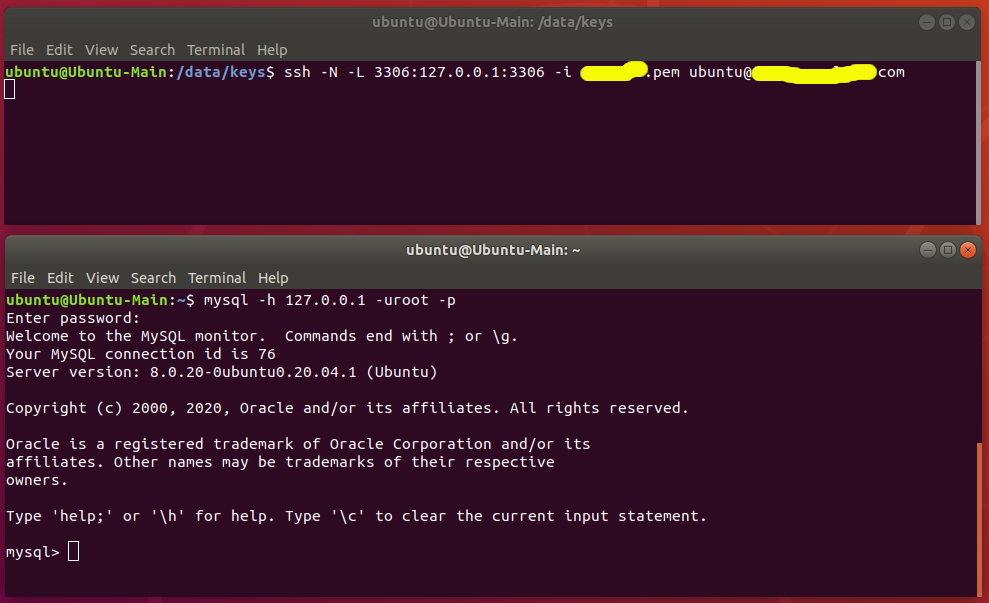

- #SSH TUNNEL MANAGER TUTORIAL HOW TO#
- #SSH TUNNEL MANAGER TUTORIAL MAC OS X#
- #SSH TUNNEL MANAGER TUTORIAL SOFTWARE#
- #SSH TUNNEL MANAGER TUTORIAL PASSWORD#
Tectia SSH client & server for Windows, Unix, Linux - with 24x7 support

For many implementations we offer a review, installation instructions, guidance, and/or how-tos on this site. Feel free to submit additional implementations for this page. We list various SSH implementations here. We offer various free SSH implementations for download, and provide links to commercial implementations.

Here you can find links to download various free SSH implementations. To understand the SSH File Transfer Protocol, see the SFTP page. For details of how the SSH protocol works, see the protocol page. All user authentication, commands, output, and file transfers are encrypted to protect against attacks in the network. The SSH protocol uses encryption to secure the connection between a client and a server.
#SSH TUNNEL MANAGER TUTORIAL SOFTWARE#
The next time you establish a tunnel to this host you’ll be prompted to authenticate again.Contents The SSH protocol Download client software List of SSH implementations Running & configuring SSH Security of SSH and attacks against it Automate with SSH keys, but manage them History of the SSH protocol The SSH protocol To see the contents of known_hosts type:Īlthough not necessary in this situation a specific entry for a known host e.g. On a side note, the list of known hosts is stored in the file known_hosts in the hidden folder ssh in your user directory. Where 6455 is the process number of the SSH tunnel.
#SSH TUNNEL MANAGER TUTORIAL HOW TO#
While there seems little point in establishing the tunnel only to manually close it shortly after, it’s useful to know that it can be done and how to do it. If the tunnel is present the results will include a line of text similar to the highlighted line:Ħ455 ? 0:00.00 ssh -f -L 15548:127.0.0.1:548 -L 15900:127.0.0.1:5900 sleep 60Īt this point the SSH tunnel could be manually closed by terminating the process. The presence of the tunnel can be confirmed by typing: Now that the SSH tunnel is established and having specified a sleep parameter of 60 we have only 60 seconds to make a connection to the remote computer before the tunnel disappears.
#SSH TUNNEL MANAGER TUTORIAL PASSWORD#
Warning: Permanently added 'hostname,12.345.67.890' (RSA) to the list of known hosts.Įnter the password for the user on the remote computer you’re logging in as and press enter. RSA key fingerprint is xx:xx:xx:xx:xx:xx:xx:xx:xx:xx:xx:xx:xx:xx:xx:xx.Īre you sure you want to continue connecting (yes/no)? The authenticity of host 'hostname (12.345.67.890)' can't be established. The first time the SSH tunnel is established you’ll be prompted with: The sleep option will not work when the -N option is included in the ssh command as this option disables remote commands. Sleep 60 will terminate the tunnel after the allotted time, in this case 60 seconds, but only if there’s no active connection. My example uses two port:host:hostport parameters each proceeded by the -L option. Using a privileged port, 1024 or below, on the local computer requires the use of sudo. For information on assigning a static hostname to a dynamic IP address see Resolving a Static Hostname to a Dynamic IP Address Using DynDNS Free.ġ5548:127.0.0.1:548 is the port:host:hostport parameter where port is the port on the local computer to be forwarded to the given port on the remote computer, host is the localhost on the remote computer and hostport is the port on the remote computer. Hostname is the remote computer’s IP address or name. User is the login name on the remote computer.
#SSH TUNNEL MANAGER TUTORIAL MAC OS X#
To create the SSH tunnel using the Mac OS X Terminal application open Terminal in the /Applications/Utilities/ folder on the local computer. Using Mac OS X Terminal to Establish the SSH Tunnel


 0 kommentar(er)
0 kommentar(er)
